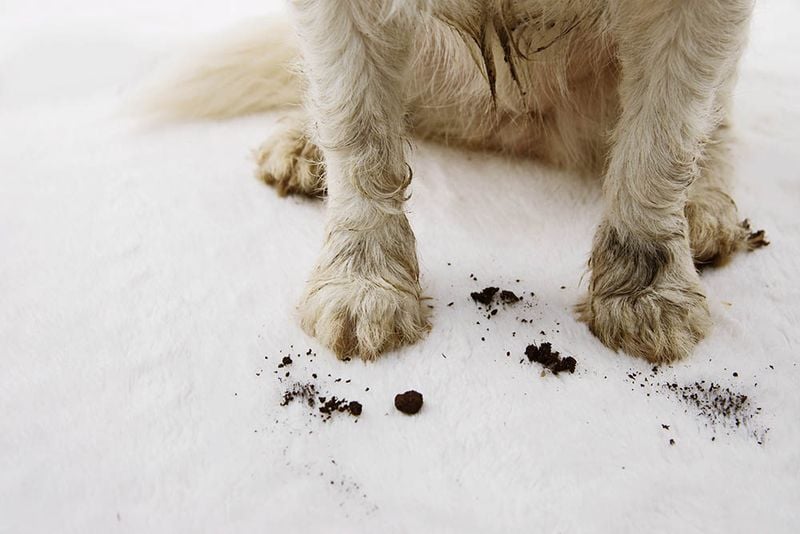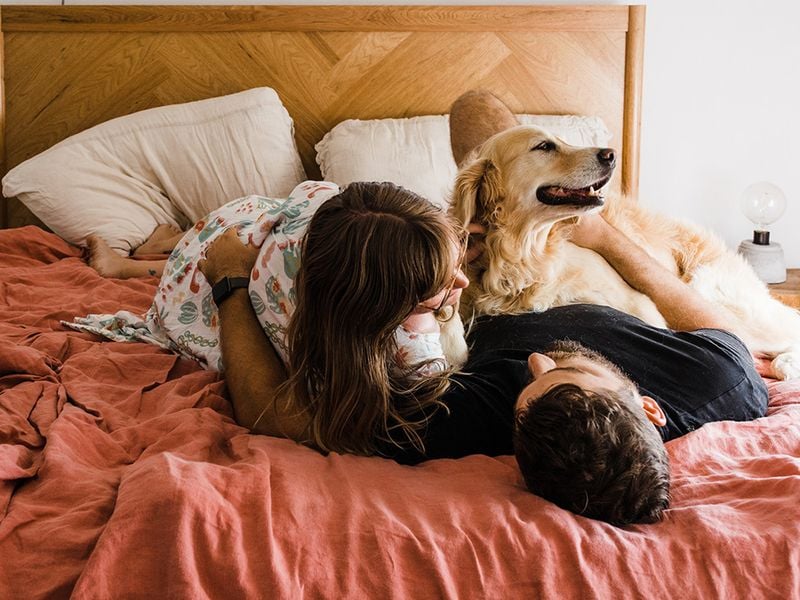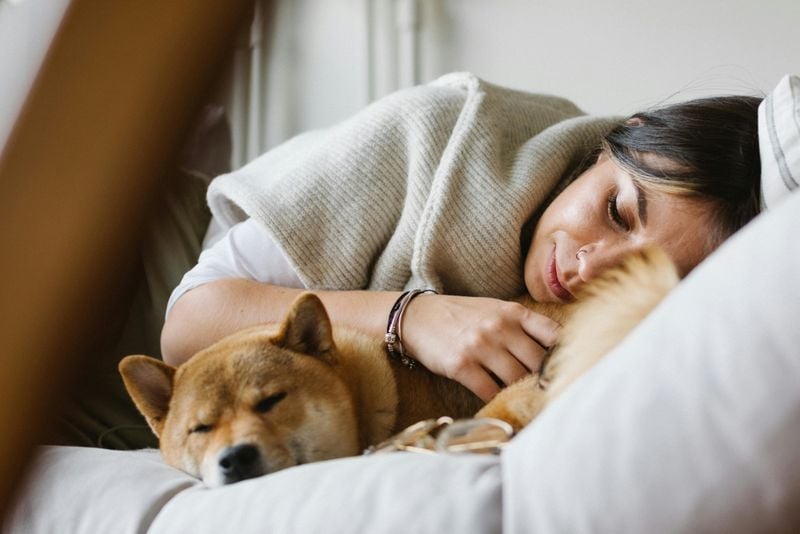7 Downsides and 7 Benefits of Letting Your Dog Sleep in Your Bed
Your dog is more than just a pet—they’re family. So it’s no surprise that many owners find comfort in letting their furry friend curl up beside them at night.
It feels cozy, safe, and undeniably sweet. But while sharing your bed with your dog might sound like the ultimate bonding moment, it’s not always as dreamy as it seems.
There are real pros—and some sneaky cons—that come with this decision. From disrupted sleep to deepened emotional connection, there’s a lot to weigh before making your bed a shared one.
If you’re on the fence about inviting your pup under the covers, this guide breaks down the biggest benefits and downsides so you can decide what works best for you both.
1. Disrupted Sleep Patterns
Dogs bring joy and companionship but can also interrupt your beauty sleep. Their movements, dreams, and little snores can lead to a night of broken rest. Especially for light sleepers, the tossing, turning, and sleep-talking can be quite the challenge.
You might find yourself waking up multiple times, trying to find a comfortable position that suits both you and your furry friend. Sometimes, the cute midnight antics of your dog can be charming, but most often, they spell a night of fragmented slumber.
If you’re someone who values a solid night’s sleep, sharing your bed with a dog might be something you want to consider carefully.
2. Allergens in the Sheets
Even the cleanest dogs can bring allergens like pollen or dander into your bed. If you’re prone to allergies or asthma, this might not be the cozy companionship you imagined.
Waking up with a stuffy nose or itchy eyes can be a reality when your canine buddy decides to join you under the sheets. Allergens can cling to their fur and follow them wherever they go, including your most intimate spaces.
Regular cleaning of both your dog and your bedding can mitigate these effects, but for those with severe sensitivities, it might not be enough. Consider your health needs when deciding if a shared bed is right for you.
3. Behavioral Issues May Arise
Sharing your bed might lead your dog to believe they own the space, fostering behavioral problems like territoriality or possessiveness. This can sometimes result in unexpected growling or guarding behaviors.
When a dog feels they have claim over your bed, it can disrupt the peaceful relationship you share. They may begin to dictate who gets to join in the slumber party, leading to tension in an otherwise harmonious household.
Training and setting clear boundaries can help, but if your dog’s behavior shifts unfavorably, it might be time to reconsider bed-sharing. A balanced approach to space and affection could be the key to maintaining a happy home.
4. Hygiene Concerns
Having your dog in bed can introduce a host of hygiene issues. From muddy paws to shedding fur, your once clean sheets might bear the marks of your pet’s daily adventures.
While the companionship is tempting, the dirt, bacteria, and potential parasites like fleas or ticks add a less delightful aspect to shared sleeping. If you cherish your hygiene, this is something to ponder seriously.
Frequent grooming and regular cleaning of your bedding can help, but the risk remains. Weighing the comfort of having your pup close against the cleanliness of your sleeping area is a decision many pet owners face.
5. Reduced Intimacy for Couples
For couples, a dog in the bed can be a romantic third wheel. While their presence is comforting, it might create physical and emotional distance between partners.
The spontaneous intimacy that can blossom in the quiet of the night might be interrupted by a furry friend insisting on being part of the cuddle. This can lead to feelings of frustration or a sense of intrusion in a private space.
Finding a balance between welcoming your pet and maintaining your relationship’s intimacy is essential. Some couples find creative solutions, while others might opt for separate sleeping arrangements.
6. Sleep Training Setbacks
Bringing your dog into bed may confuse them if you’ve been working on crate training or encouraging independence. Mixed signals can lead to setbacks in their training progress.
The comfort of a shared bed can be too tempting for a dog to resist, making it harder for them to accept sleeping alone later on. Consistency in training is crucial, and a shared bed might send conflicting messages.
For those committed to establishing clear boundaries and routines, reconsidering the decision to share your bed could be key to successful training. Consider your long-term goals for your dog’s behavior and independence.
7. Safety Risks (Especially with Small Dogs)
The presence of a small dog in your bed can pose safety risks. Rolling over or heavy bedding might unintentionally harm your petite companion during the night.
While it’s lovely to cuddle close, the risk of injury from an unaware human roll can be serious, especially for tiny breeds or puppies. Ensuring they have a safe spot in your bed can alleviate some concerns.
For peace of mind, consider alternative sleeping arrangements that keep your furry friend safe and sound. A pet bed placed nearby can offer both companionship and security, minimizing risks.
8. Emotional Comfort and Bonding
The bond between a dog and their owner is often deepened by sharing a bed. Being close during sleep can reinforce trust and companionship, making both feel more connected.
There’s something special about waking up with a fluffy friend by your side, greeting each day with wagging tails and warm snuggles. This shared space becomes a sanctuary of mutual affection and comfort.
For those who cherish a close bond with their pet, letting them sleep in the bed offers a unique opportunity for emotional connection. It’s a daily reminder of the unwavering love a pet provides, wrapped up in a cozy package.
9. Natural Stress Relief
The presence of a dog can naturally alleviate stress, thanks to their rhythmic breathing and comforting warmth. Their calming nature can ease anxiety and promote relaxation.
There’s a certain tranquility that comes with having a furry companion by your side. For those who struggle with anxiety or stress, a dog in the bed can act as a natural remedy, offering peace amidst the chaos.
This soothing companionship can transform bedtime into a moment of healing, where worries melt away, replaced by the gentle presence of a beloved pet. It’s a special kind of magic only a dog can bring.
10. Extra Warmth in Colder Months
Dogs can act as living heaters, providing extra warmth during the colder months. Their body heat offers a natural solution to chilly nights, making them perfect snuggle partners.
For those who dislike electric blankets, the gentle warmth of a dog might be just the ticket. They bring a cozy comfort that can make winter nights feel a touch warmer and more inviting.
Larger breeds with long fur are particularly effective at keeping the chill at bay. This warmth becomes a cherished part of the season, turning cold nights into moments of snug contentment.
11. Increased Security and Awareness
Dogs have an innate sense of alertness, providing a sense of security when they share your bed. Their presence can make you feel safer and more aware of your surroundings.
Having a vigilant companion by your side means you might rest easier, knowing they’ll alert you to any unexpected noises or potential dangers. This added layer of security is comforting, particularly for those living alone.
Trusting in your dog’s instincts can lead to a more restful sleep, free from the usual concerns. A shared bed becomes not just a place of comfort, but also one of protection.
12. Alleviates Dog Separation Anxiety
For dogs prone to separation anxiety, sharing a bed with their owner can be incredibly soothing. It provides them consistent access to their human, reducing stress and behavioral issues.
This closeness can significantly improve a dog’s quality of life, making them feel secure and loved. The emotional comfort found in a shared sleeping arrangement can lead to a happier, more balanced pet.
For owners looking to ease their dog’s anxiety, allowing them to sleep in the bed offers a simple yet effective solution. It’s a mutual exchange of support, fostering a deeper connection.
13. Strengthens Routine and Trust
Including your dog in your bedtime routine can strengthen trust and security. This predictable schedule offers them a sense of stability and belonging.
The consistency of going to bed together creates an environment where your dog feels valued and loved. This can promote positive behavior throughout the day, as they understand their place in the family.
For those who thrive on routine, incorporating your dog into this nightly ritual can enhance the bond you share. It’s a testament to the trust and affection that underpins a healthy human-dog relationship.
14. Mutual Emotional Support
The companionship of a dog in bed offers mutual emotional support. Just as you find comfort in their presence, your dog also gains reassurance from being close to you.
This shared space becomes a haven where both human and pet can find peace and solace. It’s an intimate exchange of warmth and affection that strengthens your bond.
In times of stress or sadness, this connection can be particularly healing. The gentle presence of a dog provides an emotional anchor, reminding you both of the unwavering support you offer each other.



















